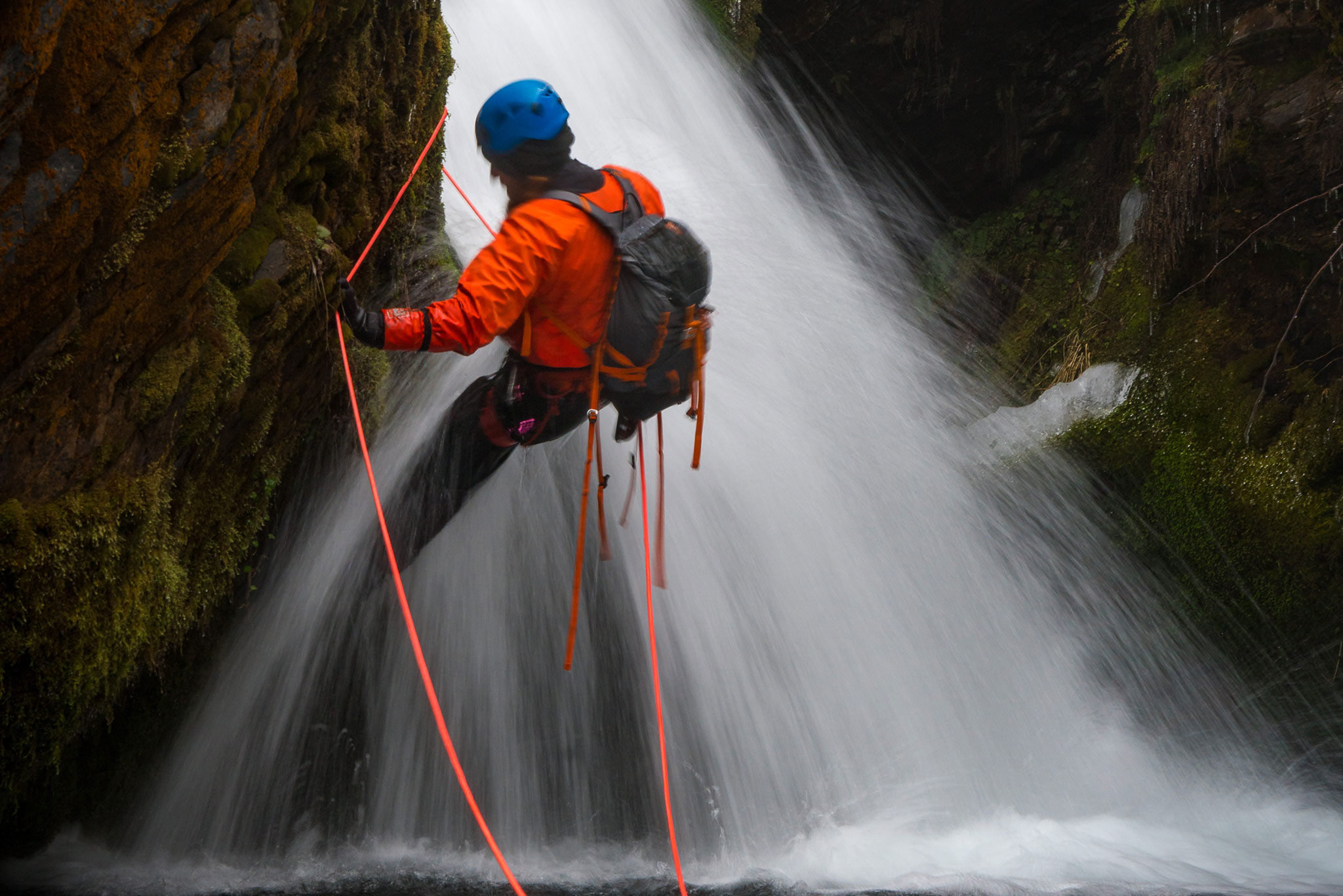The deafening roar of the water is all around me. I can feel the force of the waterfall hitting me in the chest and legs. I focus in, grip the rope in my hand and peer down through the flow trying to spot my landing zone in the rain room below. I take a breath and release my grip, allowing the rope to slip in a rapid and controlled manner through my hand and the descender attached to my harness. Simultaneously, I spring outward away from the wall and drop through the main flow of the waterfall. I duck as I pass into the full force of the water; it is ice cold and absolutely thunderingly loud. A mere second or two later I am through the flow standing in the rain room behind the curtain of the waterfall. I look back up to where I just came from and let out a “Whoop!” Forty more feet to go and I will land safely at the bottom of one of the most epic waterfalls I have ever rappelled.

There are few places left on the planet as unexplored as caves and canyons. Having written about caving in the past, I thought I would take you on an adventure into the other unknown realm: canyons. But first I need to tell you what it is exactly that we will be embarking on. …
Canyoneering or canyoning, as it is interchangeably referred to, is the process of moving down a steep and rugged canyon using various forms of technical skills such as scrambling, hiking, climbing and rappelling. Most often, when the term canyoning is thrown around, people are referring to using technical rope work and the associated skills and techniques to make their way down a canyon that would be otherwise impassable without the aforementioned gear and skills. When most people think of canyoning, they likely picture the popular dry desert slot canyons of the American Southwest. This would be an accurate assessment; however there is another version of this “underground” sport. That version is aquatic canyoning; that is, moving through canyons that are filled with water.
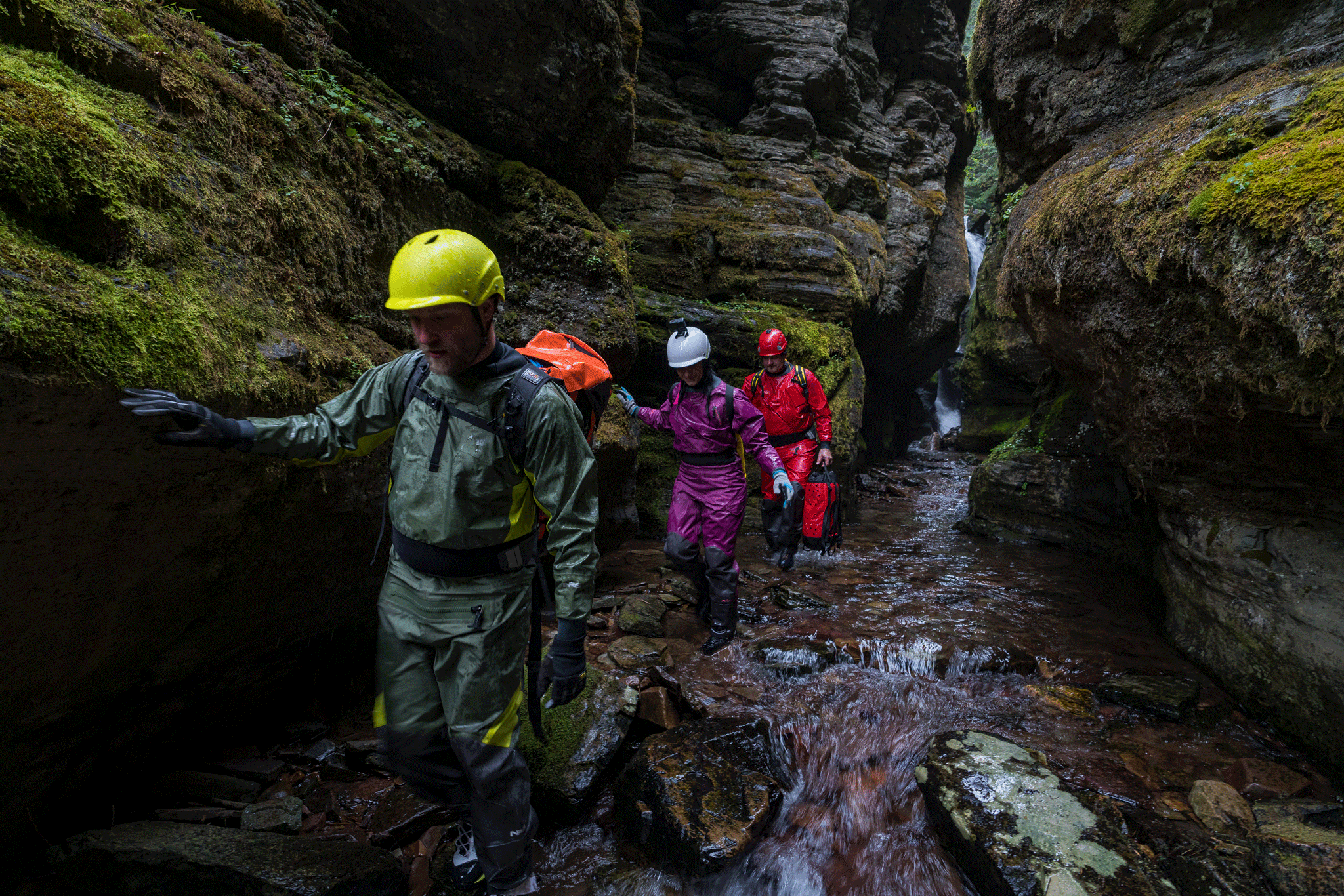
The presence of water adds another level of challenge and risk, but managed correctly can result in unending fun. Some of these aquatic canyons have just a trickle of water and some have torrents of water creating explosive waterfalls and hydraulics that require careful planning and a high level of skill to navigate down safely. In either case, the aquatic canyoning world can be very different from its dry counterparts. It is often cold, slippery and dark but equally exhilarating.
This particular version of the sport is fairly popular in Europe and New Zealand. However it is also growing in popularity in our very own Pacific Northwest region. There are dozens of established canyoning routes and canyoneers throughout the Cascade and Pacific Coast ranges of Washington and Oregon. Until recently, there have not been canyoning routes or canyoneers (with exception of one friend who established two routes) in the Inland Northwest, specifically Eastern Washington, North Idaho and Western Montana. Over the course of the last year I, along with Jeff Durocher, Ali Stevens and Miles Bergsma, have been identifying, locating, and establishing canyoning routes in rugged and remote creeks all over the Greater Inland Northwest.
Now let’s get back to the canyon that this story takes place in. …
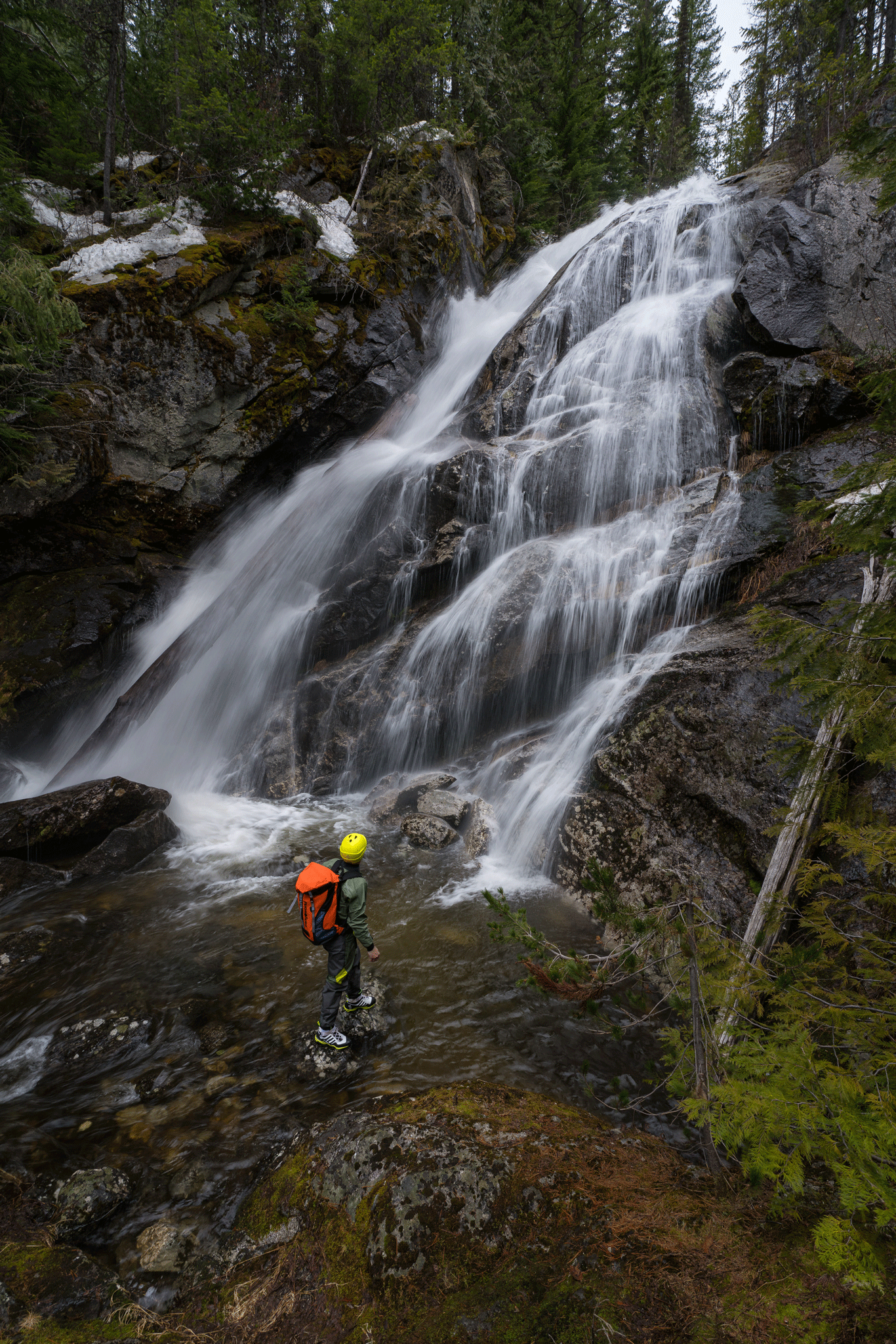
Deep in the mountains of North Idaho there exists a creek with 19 waterfalls spanning a distance of less than ¾ of a mile. The ground and cliffs are loaded with thick mats of vibrant green moss; Sword ferns and mushrooms fill any voids left over and cedar trees tower overhead, blocking sunlight in several areas of this canyon. The pools at the bottom of the waterfalls are a brilliant turquoise blue juxtaposed against black and dark grey bed rock with the occasional bull trout swimming around. It is truly a place of wonder!
As always, we start our day early; meeting at my house at 5:30 a.m. to load everyone’s gear in the truck. We know it is going to be critical that we get as early a start as possible if we want to complete the canyon inside of the daylight hours. After arriving at the trailhead, we hop out of the truck and Miles launches his drone to go scout the canyon before we commit to dropping into it. It is important to know the water levels in the canyon before entering. If the water is too high, it can be deadly. Once Miles finishes scouting and confirming that the water is at the perfect level, we begin organizing and donning gear. This includes base layer systems, drysuits, neoprene socks, canyoning shoes, harnesses, canyoning descenders, carabiners, slings, ascenders and, of course, the rope. Everything we want to stay dry is stowed in drybags inside of our backpacks. Once everyone is ready, we begin hiking from the truck down into the canyon.
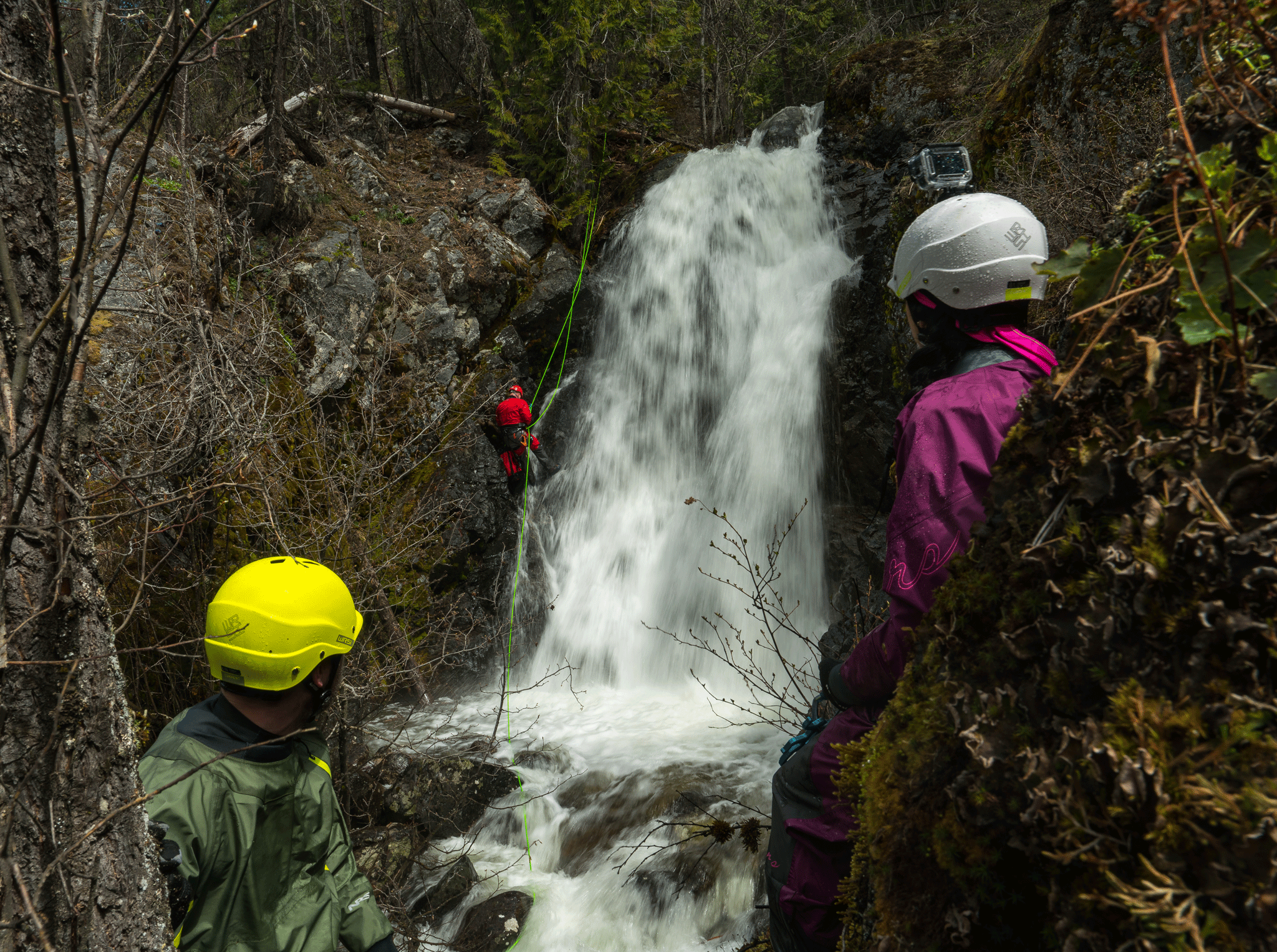
There is no trail leading to where we are going; just the way it should be. After a few hundred feet of descent through thick brush and a steep mountainside, the sound of the creek begins to come into earshot. A short distance later we see the creek through the trees; there are a series of small yet beautiful cascades right before the spot that we want to enter the creek. Immediately after, the river turns sharply to the right and enters a slot canyon. Our excitement builds. We know that the first big drop of the canyon is right around the corner. We enter the creek and begin walking into the canyon, heading around the corner to the first waterfall and the excitement that lies below.
In aquatic canyoning, it is critical to preserve these fragile ecosystems. To prevent resource destruction, we do everything we can to stay in the watercourse and to operate in small teams. Creating user trails and stripping moss from rocks and the ground around the creek isn’t good for the aesthetics or the ecosystems in the canyon. We would never want to leave a mark and prevent someone else from experiencing that sense of wonder and feeling like they just discovered something amazing for the first time.
Story continues after a quick message from our sponsor below.
As soon as we round the corner we can see the first waterfall dropping out of sight 40 feet below us. Jeff builds an anchor and rigs the rappel on a large cedar tree that is growing right out of the cliff side above the creek. He pays out some rope and tosses it out down the drop. Ali peers over the edge and confirms that the rope length is perfect, ending just above the surface of the deep pool below. I thread the rope through my descender, perform last-minute anchor and gear checks and begin my rappel down the face of the waterfall.
Once I near the bottom, the face of the waterfall drops away and is undercut behind the curtain, creating a cave — my first time on this drop months prior led to me missing my step and falling in behind the cave onto a pile of rocks. I would prefer not to repeat history. I make a last-second check for rope length and ensure my descender is not tangled. Then I jump backward off the end of the rope and into the pool. The creek being spring fed means the water is never warm. Even with a drysuit on, the water is shockingly cold, and I immediately feel a brain freeze coming on from having my head submerged for just a few seconds. Once I resurface, I give two short blasts on my whistle to indicate that I am OK. As I swim away from the plunge pool, I check the depth to make sure the pool is deep enough to jump into. It is and there are no obstructions under the surface of the water. With that, I signal up to Miles that it is clear.
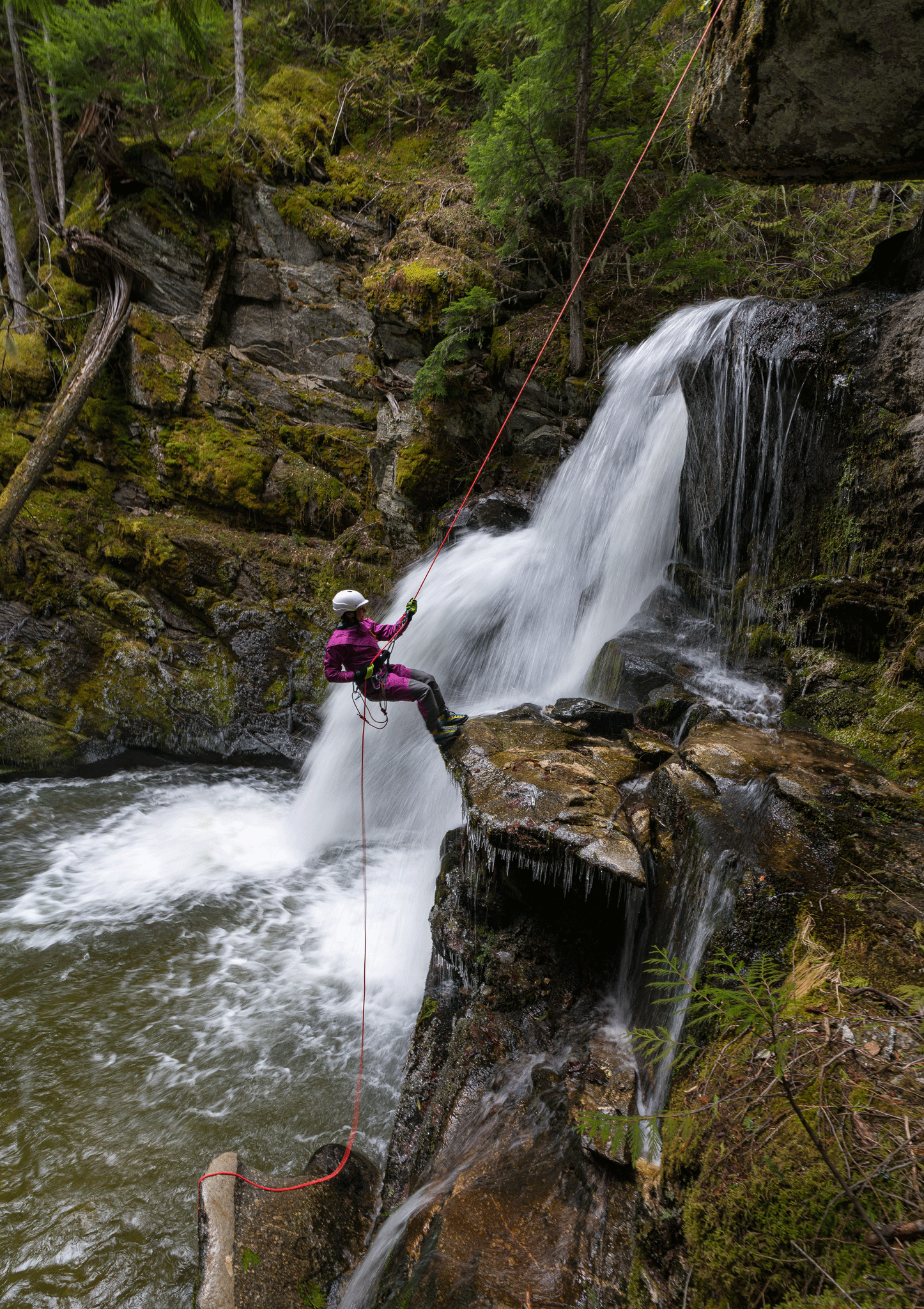
Almost immediately, Miles jumps from the top of the falls and lands with a huge splash in the pool below.
He resurfaces with a giant smile on his face. Jeff and Ali both decide to try the slide method and hoot and holler their way down. Once we are all out of the pool, we make our way downstream to the next series of drops, setting up retrievable anchors, rappelling, pulling rope and moving on to the next successive drop below. By using retrievable anchors we are employing a technique known as “ghosting,” where we leave no trace of us having been in the canyon.
After a couple of hours of leap-frogging downstream, taking pictures and enjoying the mind-boggling scenery, we stop to grab some snacks and water just above the final series of drops. As we sit admiring this incredible place, we exchange stories and highlights from the previous rappels, jumps and slides of the day, knowing full well the best was yet to come.
Once done refueling, we make our way down the next several rappels leading us to the final and largest drop of the run, where this story began. I build an anchor using my retrievable sling around another large tree, measure out the rope length and toss the rappel line down to the bottom. Luckily, the pool is shallow and the 10-15 feet of extra rope is not going to be an issue. I back over the edge after double- and triple-checking my systems and begin to lower myself down the waterfall. I have been looking forward to the exhilaration this epic drop would bring to us all. And it did not disappoint. N
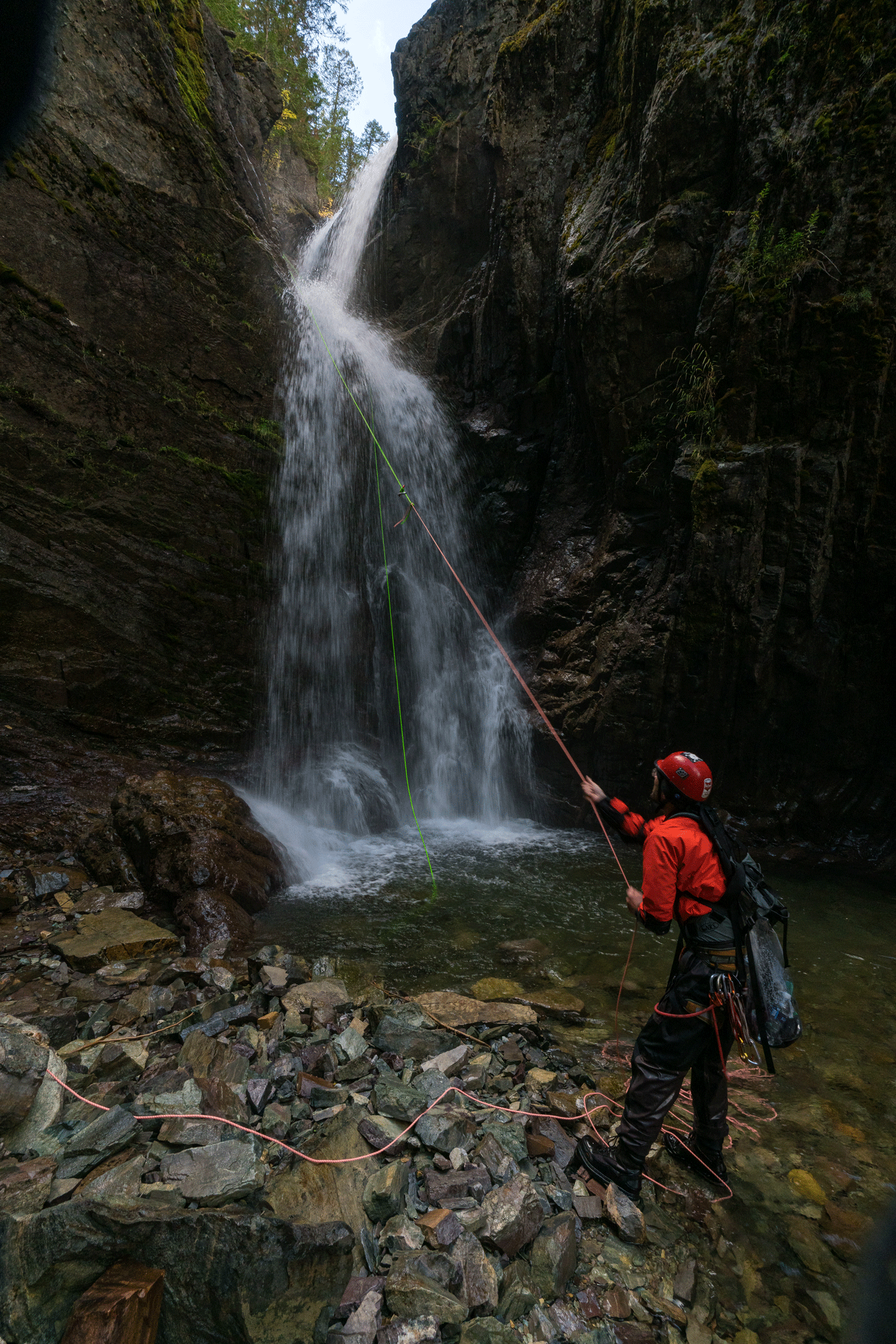
Story & Photography By Chris Celentano
As Featured In: Winter/Spring 2022


